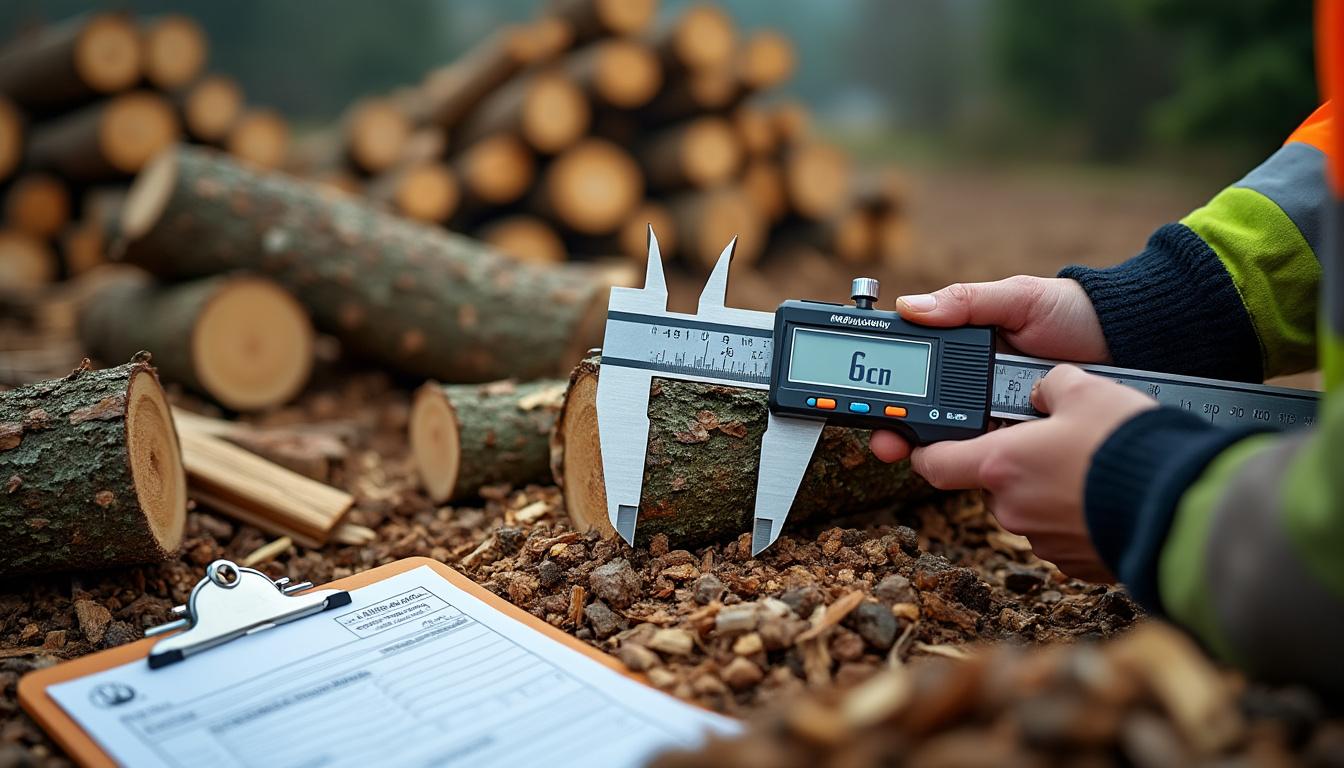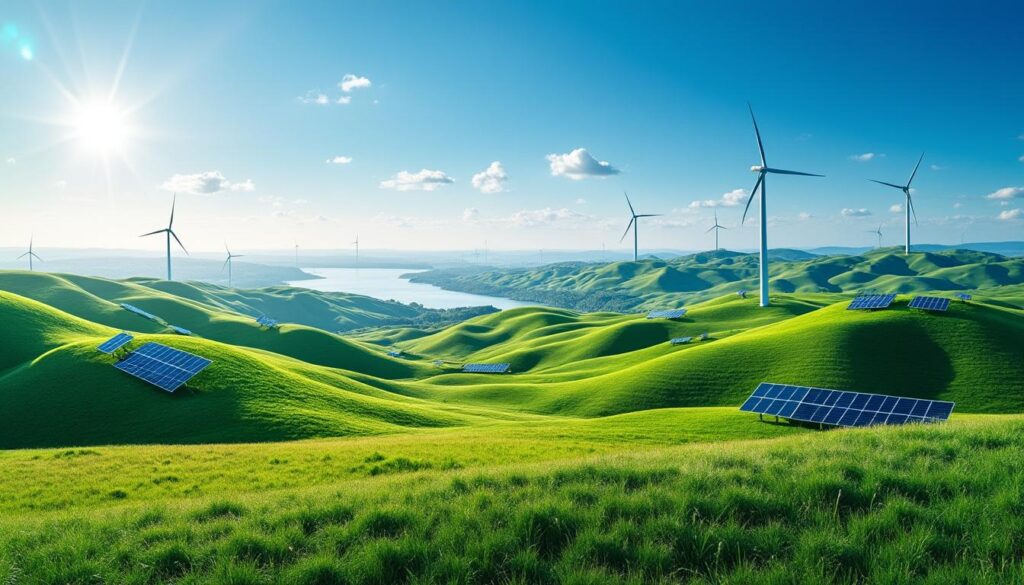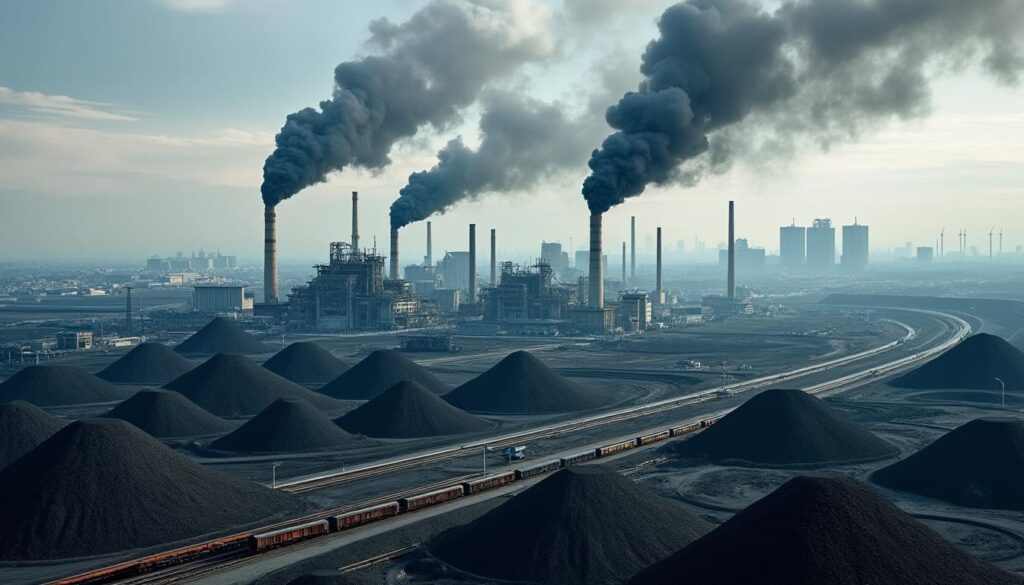The definition of Residual Forest Biomass with a limit of up to 6 centimeters in diameter for energy use is reshaping the role of wood in renewable energy. For those managing forests, operating boilers, or planning energy-efficient buildings, this new framework paves the way for responsible expansion, focusing on efficiency, traceability, and true sustainability.
The goal is simple: to add value to good wood in products and reserve energy for truly unused waste, aligning daily practice with the cascading use principle and the goals of RED III.
Short on time? Here’s the essential:
| ✅ Key Point | 🎯 Utility | 🛠️ Quick Action |
|---|---|---|
| RFB up to 6 cm in diameter | Clear visual criteria for separating noble wood waste | Implement diameter measurements upon biomass reception |
| Prohibition of support for burning “good” wood | Prioritizes higher value products and reduces emissions | Migrate to co-generation and useful heat |
| Cascading use formalized | More lifespan for wood-based products | Create a procurement policy with a usage hierarchy |
| Traceability reinforced | Clear origin, simple auditing, market trust | Request origin documents and moisture 📄🌡️ |
Wood for energy generation: responsible expansion up to 6 cm in diameter
The new definition of Residual Forest Biomass (RFB) establishes that logs and wood items with diameter greater than 6 cm fall outside the scope of “residual” fuel. The aim is to prevent wood with industrial potential from being diverted to boilers, reserving energy for branches, tops, bark, leaves, urban pruning, and by-products of lesser use.
By associating a visual and easily verifiable criterion with sustainability rules, the decision responds to a long-standing demand from environmentalists and the transformation sector. Moreover, the end of public support for plants dedicated solely to electricity and the emphasis on co-generation raise the bar for efficiency, at a time when renewable energy needs to be, in addition to being clean, smart.
6 cm criterion: how to apply it on the ground without wasting time
In biomass parks, sawmills, and thermal plants, the procedure becomes simple. Organize the reception with a sorting area, trained teams, and photographic records of samples. Use calipers or templates marked with 6 cm and apply batch sampling. Those delivering waste will know upfront that the out-of-specification material will be rejected or redirected to higher markets.
The gain is immediate: it prevents the burning of usable logs, increases the supply for panels, construction, and carpentry, and focuses energy on fine and moist fractions, where combustion with moisture control makes sense. In parallel, the definition of RFB encourages the cleaning of stands and the reduction of fuel load, contributing to fire risk management.
- 🌲 Prioritize branches, tops, and bark with diameters less than 6 cm.
- 📏 Use simple templates for quick checks in the yard.
- 🧾 Record lots with photos and control measurements.
- 🚫 Redirect wood over 6 cm for industrial uses.
- 🔥 Adjust boilers for finer and moister fuels.
A fictional operator, “Green Energy from Beira,” documented that by separating batches by diameter, it reduced thermal costs by 18% per MWh due to diminished penalties and improved combustion. The lesson is clear: the right waste in the right equipment increases efficiency and profitability.
| ♻️ Eligible materials (≤ 6 cm) | 🚫 Non-eligible materials (> 6 cm) | 🔄 Recommended destination |
|---|---|---|
| Branches, leaves, bark, fine shavings | Logs, boards, structural rods | Heat/co-generation or composting |
| Eucalyptus/pine tops | By-products with industrial value | Panels, pulp, construction |
| Shredded urban prunings | Quality sawn wood | Reuse/recycling before energy |
With the 6 cm limit, the expansion of wood’s energy use is no longer synonymous with pressure on the forest. It becomes an opportunity to order flows, add value to materials and cut emissions per useful kWh.
RED III in Portugal: goals, prohibitions and traceability that change the game
The transposition of RED III brings a coherent package: renewable goals for buildings, industry, and heating/cooling; prohibition of public support for burning wood that is not residual; reinforcement of sustainability criteria and emissions reduction; and traceability mechanisms that identify the origin of biomass.
In addition to the RFB definition, the end of support for exclusively electrical biomass plants stands out, encouraging co-generation installations that harness heat. The principle of cascading use gains formalization, directing energy to the last stage of life, after extension, reuse, and recycling of wood-based products.
What changes for landowners, municipalities, and industry
For those managing forest properties, diameter sorting improves the average selling price by diverting noble wood to higher value markets. Municipalities gain clarity for heat networks from urban green waste. Industries with biomass boilers should prepare compliance plans, origin audits, and moisture monitoring.
- 🧭 Create a map of origins with suppliers, lots, and species.
- 🧪 Install moisture measurement at reception (goal: 20–30% for modern boilers).
- 📚 Formalize contracts with a diameter ≤ 6 cm clause and traceability.
- 🏭 Study migration to co-generation with recovery of useful heat.
- 🧯 Integrate RFB collection into forest fuel management against fires.
| 📌 RED III Element | 📈 Practical Impact | ✅ Recommended Action |
|---|---|---|
| Formalized cascading use | Energy becomes the last option | Inventory reuse/recycling before burning |
| Prohibition of support for burning “good” wood | Redirects logs to industry | Implement diameter sorting |
| Traceability and transparency | More audits and market trust | Use digital records of lots and origin |
| Goals in buildings and industry | Increased demand for renewable heat | Plan heat networks with RFB |
Organizations like Zero and Centro Pinus praised the ambition, but warn of exceptions that could weaken practice if the cascading use application is derogated. The message is clear: without firm mechanisms, the diploma risks being strong on paper but weak in practice. The good news is that the combination of visual criteria, clear prohibitions, and traceability creates conditions for real change, provided it is applied rigorously.
To explore implementation in efficient architecture projects and heat networks, resources and practical guides are being shared at Ecopassivehouses.pt, a platform for ideas and strategies on ecological construction and energy.

From forest to kilowatt: efficient and waste-free wood energy chain
When the flow is well designed, residual biomass transforms into heat and electricity with controlled costs and decreasing emissions. It all starts with selective harvesting, followed by processing and drying, and ends in controlled combustion. The secret is to avoid the diversion of valuable wood and reduce moisture to a level compatible with the equipment.
In practice, forest harvesting teams gather branches, tops, and bark, shred on-site, and direct them to air drying platforms. In dense areas, in situ shredding reduces the number of trips; where not feasible, short and frequent routes are organized. Moisture naturally decreases in the first weeks, and can be finalized by pelletizing or briquetting when there is market demand and scale.
Pelletizing and briquetting: when it pays off and when it doesn’t
Wood pellet has lower moisture and higher density, reducing freight costs per delivered energy and improving combustion. In small and medium power boilers, particle size consistency simplifies control. However, capital and operating costs do not always offset if the fuel is intended for industrial boilers that accept heterogeneous chips. The choice should consider scale, distance to the customer, and equipment requirements.
- 🚚 If transport is long, densifying (pellets/briquettes) tends to pay off.
- 🏭 In robust industrial boilers, controlled chips may suffice.
- 🌬️ Air drying + simple covering already greatly reduces moisture.
- 🧰 Keep screens and grilles calibrated for fine fractions.
- 🔧 Adjust combustion air to the available fuel.
| 🔁 Step | ⚙️ Good practice | 💡 Benefit |
|---|---|---|
| RFB collection | Diameter sorting ≤ 6 cm at the source | Avoids diversion of noble wood |
| Shredding | Appropriate particle size for the burner | Stable and clean combustion |
| Drying | Covering and natural ventilation | More kWh per ton 🌞 |
| Densification | Pellets/briquettes if logistics justify | Cheaper freight per MWh |
| Burning | Co-generation and emission control | Superior overall efficiency |
An illustrative case: the “Vale do Pinhal Cooperative” reorganized the RFB chain with simple covering, particle size control, and contracts by dry ton. Within six months, the average PCI increased by 12% and specific consumption decreased by 10%. The cooperative began selling chips to a municipal heat network and briquettes to hotels out of season, stabilizing revenue.
In summary, the expansion with a 6 cm limit is not a brake but a smart accelerator: it reduces waste, improves logistics and increases energy performance where it truly matters.
Co-generation and cascading use: more useful heat, fewer emissions and better economics
Burning wood solely for electricity wastes heat. That is why the new policy disfavours plants dedicated only to electricity and stimulates co-generation (CHP), where the useful heat is harnessed in industrial processes or urban networks. Technologies such as grate boilers, fluidized beds, and ORC allow achieving overall efficiencies of 70–85%, compared to 25–35% in isolated electrical generation.
The principle of cascading use ties technique to ethics: first, products with greater value and lifespan (construction, furniture, panels); then, reuse and recycling; finally, energy. When applied consistently, this principle reduces pressure on the forest, sequesters carbon for longer, and when the time for energy arrives, offers a truly residual fuel.
Errors to avoid in boilers and heat networks
Classic problems stem from the wrong fuel in the wrong equipment. Excessively moist chips clog feeders, generate tars, and raise emissions; excessively fine fractions without control cause flame return; mixed batches with logs over 6 cm increase heterogeneity and degradation of the process. The solution is to contract specifications, measure and record.
- ❌ Avoid mixing logs with RFB chips.
- 🌡️ Keep moisture within the recommended range by the manufacturer.
- 🕒 Schedule cleaning and inspections for the heat exchanger.
- 📑 Demand certificates of origin and diameter upon delivery.
- 🏘️ Prefer heat networks to isolated consumption without heat recovery.
| 🏗️ Cascade Step | 🧱 Practical Example | 🌍 Result |
|---|---|---|
| Product | Glued laminated timber beam in construction | Carbon stored for decades |
| Reuse | Repurposing panels in rehabilitation works | Less extraction and waste |
| Recycling | Transforming shavings into MDF panels | Prolonged economic value |
| Energy | Burning RFB ≤ 6 cm in co-generation | High efficiency and useful heat ♨️ |
To illustrate, a textile factory from Minho integrated CHP with residual chips, supplying a neighboring neighborhood via a heat network. The thermal bill fell by 22% and the electrical bill by 9%, while the carbon footprint decreased verifiably thanks to the traceability of the batches. This is the type of energy virtuousness that the new rule encourages.
In collective housing and public facilities projects, co-generation with RFB creates synergies between efficiency, comfort, and cost, especially when coupled with thermal insulation, controlled ventilation, and intelligent management – themes that can be explored at Ecopassivehouses.pt.
Markets, industry and future: impacts for builders, municipalities and families
The 6 cm rule rebalances the market: quality wood turns to industry, while waste gains energy valuation aligned with public policy. The forestry sector benefits from better average prices and clearer contracts; the pulp and panel industry sees increased availability of raw material; municipalities and public services gain consistent fuel for heating networks and swimming pools.
On an international level, pelletizing has consolidated as the most traded solid biomass, thanks to its high energy density and reduction of relative freight costs. In Brazil, the expansion of cellulose has raised demand for wood and energy by-products, a reminder that coordination between industries is crucial to avoid local tensions. In Portugal, the valuation of stone pine and careful management of eucalyptus form the basis of a supply with quality and lower risks.
Compliance checklist for 2025
For builders, municipal managers, and families to seize the opportunity without stumbling, it is worth following an operational roadmap. The goal is simple: to buy and use only properly documented residual biomass, operate equipment safely, and get the most heat per euro invested.
- 🧾 Demand origin declaration and diameter of batches (≤ 6 cm).
- 🌡️ Check moisture with a portable meter at reception.
- 📏 Confirm particle size compatible with the burner.
- 🧯 Integrate biomass into the fire protection plan.
- 🛠️ Schedule annual maintenance and energy audits.
- 📍 Prefer suppliers with digital traceability and photographic records.
| 👥 Profile | 💼 Opportunity | 🚀 Next Step |
|---|---|---|
| Builders and building managers | Stable renewable heat for AQS and climate control | Study CHP boiler + internal network |
| Municipalities | Heat networks with urban and forest RFB | Map green waste and logistic hubs |
| Families | Heating rooms with certified pellets/briquettes | Purchase from tracked suppliers 🔍 |
| Industry | Co-generation with process recovery | Plan contracts for dry tons |
For those envisioning efficient homes, residual biomass can be the “piece” of heat in well-insulated buildings with controlled mechanical ventilation, where the required power is lower, and the right fuel makes all the difference. It is not a miraculous shortcut, but a solid tool in a well-tuned efficiency ecosystem.
If you manage a condominium, a small industry, or a municipality, the simple action to start today is: formalize a procurement policy with the 6 cm limit, request traceability and moisture on each delivery, and assess the migration to co-generation where there is continuous thermal consumption. For practical support and applied examples, explore the resources at Ecopassivehouses.pt. The rule that sticks in the ear: only burn what has no better use — and utilize all the heat.
What exactly counts as Residual Forest Biomass (RFB) up to 6 cm?
Branches, tops, bark, leaves, shredded urban prunings, and fine shavings that, at their widest point, do not exceed 6 cm in diameter. By-products with industrial value and logs above this limit should be prioritized for material uses (panels, pulp, construction) before energy.
How to prove the compliance of my biomass fuel?
Implement diameter sorting with templates, photographic records by batch, certificates of origin, and moisture measurement upon reception. Contracts should include the 6 cm limit and particle size/PCI parameters.
Does co-generation make sense in small installations?
It depends on the continuous thermal load. In buildings or processes with stable heat consumption, co-generation increases overall efficiency and can reduce costs. Where heat is not recoverable, consider high-efficiency boilers solely for heat.
Are pellets always better than chips?
Not necessarily. Pellets have controlled density and moisture, great for small boilers and long logistics. Chips work well in robust industrial boilers, provided that particle size and moisture are within the recommended ranges.
What changes with the prohibition of support for burning good wood?
Public support will no longer finance the burning of wood with material potential, encouraging cascading use and migration to co-generation with RFB. Practically, it improves the availability of raw materials for industry and increases the efficiency of the energy system.
Source: www.publico.pt


